Canadian spruce "Konica": description and cultivation
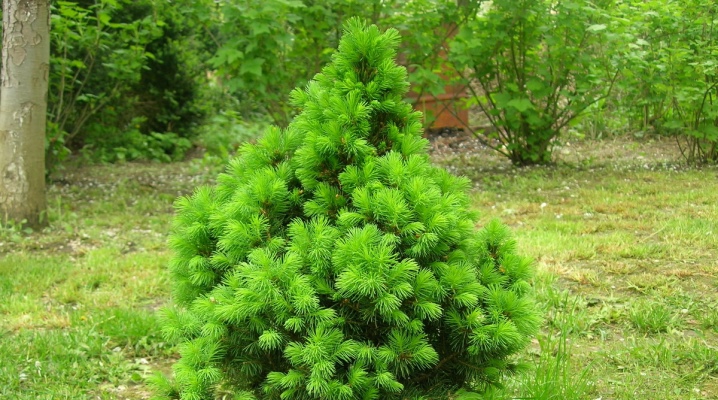
Conifers are popular and sought-after plants that landscape designers use to create amazing and unusual green compositions. Konika occupies a special place among the firs. This variety is not only unpretentious and resistant to diseases, but also has a beautiful conical shape. It is this plant that should be paid attention to beginner gardeners who want to create coniferous plantations on their site that can delight their owners not only in the warm season, but also during the New Year holidays, because it is Konika that can replace the Christmas tree.
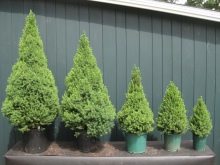
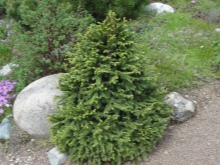
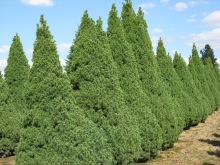
Description
Canadian spruce (glauca) "Konica" is an ornamental coniferous plant that belongs to the gray-gray family and has a second name, glauconic. The birthplace of dwarf glauconics is Canada. In 1900, biologists became interested in her, and they began the process of its popularization. Due to its unpretentiousness and high decorative performance, spruce has become in demand and popular in all countries of the world. The maximum life span of spruce reaches 300 years. The annual growth of a young tree does not exceed 10 cm, and that of an adult tree does not exceed 3 cm.
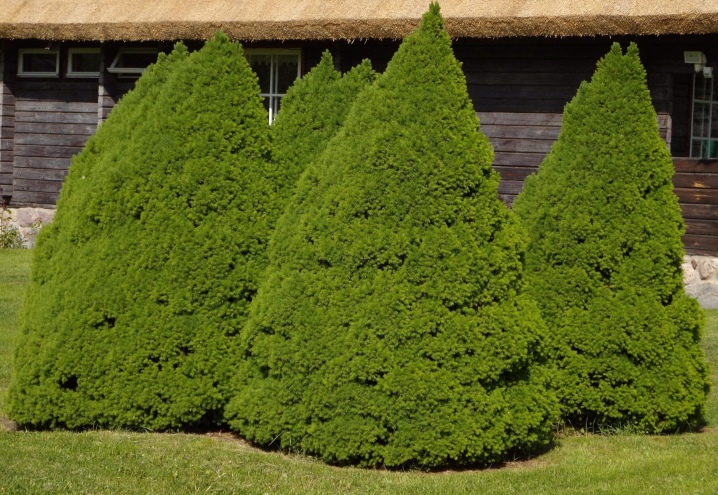
Distinctive features of the plant are small size, conical shape and gray bloom on needles. To give the plant the shape of a cone, there is no need to trim the spruce, it will take this shape itself.
The maximum height of spruce in favorable climatic conditions can reach 4 meters, but more often you can see trees about 2 meters in size. Thanks to this size, "Konika" can be grown not only in the open field, but also in special portable containers.
The diameter of the lush and voluminous crown ranges from 1.5 to 2 meters. The needles have a rich bluish-green hue, their length does not exceed 10 mm. Cones have an oblong shape, and their size does not exceed 6 cm. Coniferous fruits are very rare on this species of spruce.
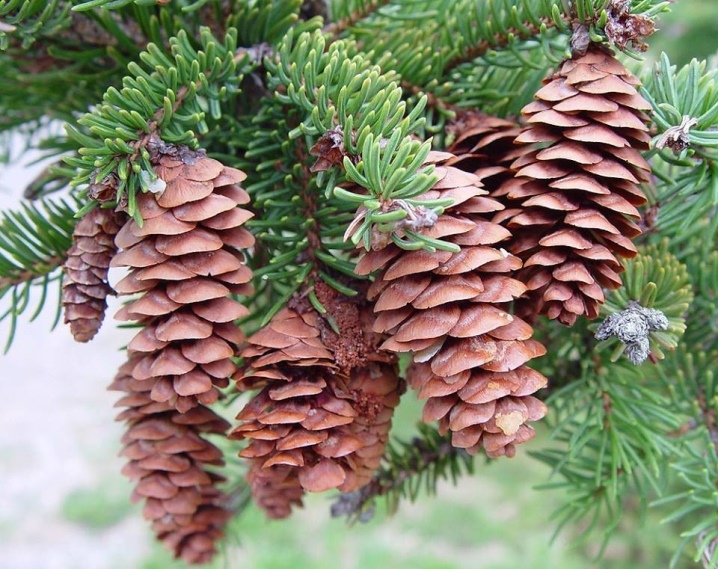
When transplanting and caring for spruce, it must be borne in mind that this species has a superficial root system with horizontal roots located in the upper soil layers, careless handling of which can lead to their deformation.
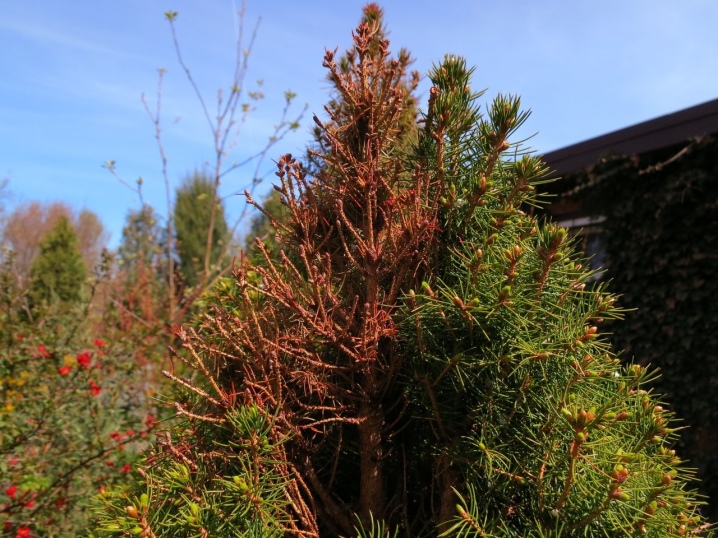
Varieties of varieties
Long and painstaking work of breeders allowed to obtain several varietal varieties of this blue spruce.
- Elegance Compact - a variety that was bred by Czechoslovak specialists in 1950. Despite the fact that this species has external similarities with the base variety, it also has a number of distinctive features.
The annual growth of a strong and hardy tree, regardless of its age, is 5 cm.
The most striking features are a light brown shade of buds, a light green color of shoots, a bright green color scheme of needles. The maximum height of the tree is no more than 2.5 meters, the length of the cones is about 1 cm.
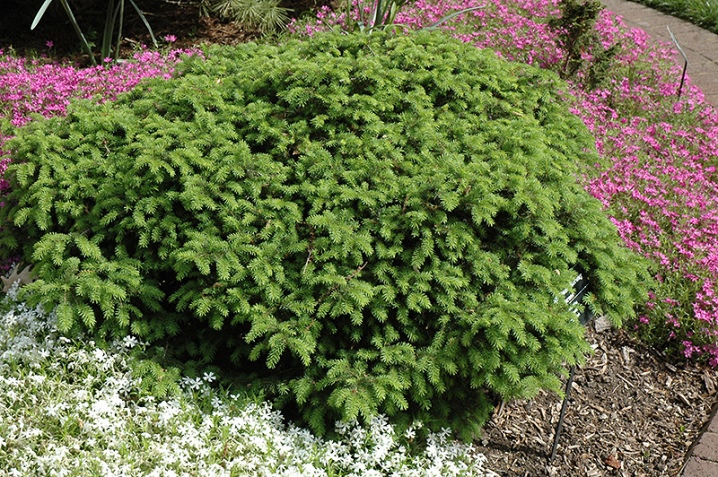
- "Alberta Globe" - a variety that was obtained as a result of natural selection. The homeland of this species is the Netherlands.
The appearance of the plant resembles a shrub, and its height does not exceed 1 meter. The shape of the decorative variety resembles a ball and has a dense crown.
A distinctive feature is the radial arrangement of the shoots. Average annual growth can exceed 10 cm.The diameter of the spruce, whose age reaches 10 years, is 50 cm. Soft and delicate needles can grow up to 1 cm. The shade of the old needles has a yellowish tint, but the young shoots are painted green. Sometimes small brown buds can be seen at the ends of the branches.
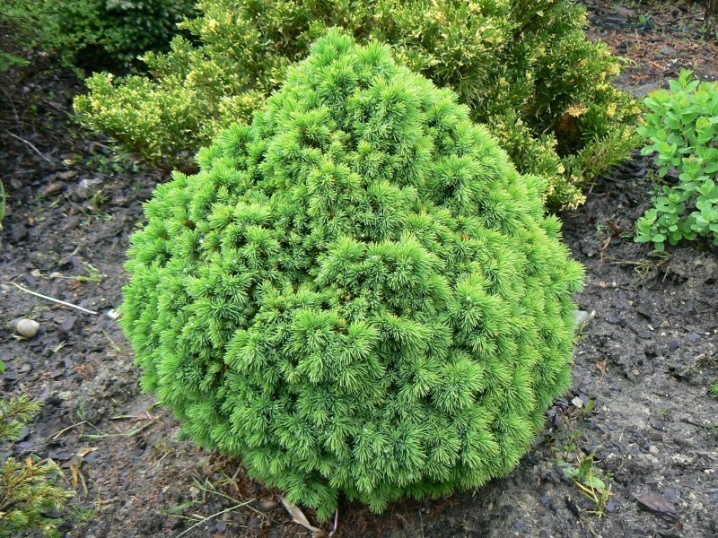
- "Dwarf" - a small variety, the height of which does not exceed 1.5 meters. Lush branches are located on a narrow crown, the shape of which resembles a cone. The maximum needle size is 7 mm.
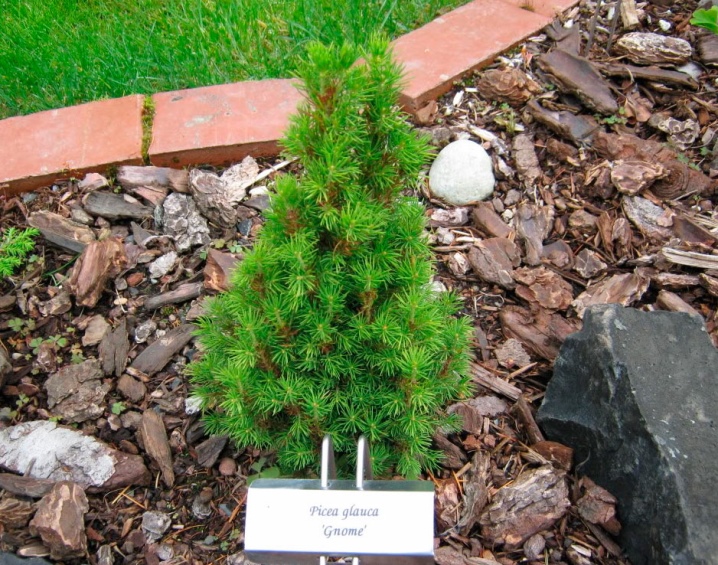
- "Laurin" Is a very rare species with a low annual growth rate. The height of a young spruce can increase annually by no more than 5 cm, but the growth of an adult tree is significantly slowed down and the annual growth does not exceed 2 cm. The root system has the shape of a sharp cone.
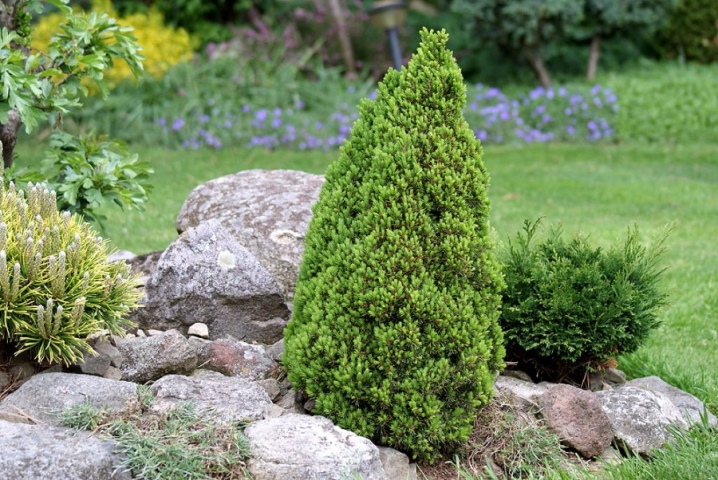
- "Maygold" - a hybrid of the classic "Konica", which has golden needles and a compact conical shape. The plant has very delicate needles, the length of which does not exceed 8 cm. Young trees are covered with yellow-gold needles, but by winter their color changes to a darker one.

- "Desember" - an improved hybrid that has an annual growth of about 15 cm and a denser crown. The color of the needles is light green. This species can be planted on both acidic and alkaline soils. "Desember" is a favorite among landscape designers subspecies of "Koniki", which decorate rocky and alpine hills, as well as terraces and summer grounds.

Landing rules
Despite their decorativeness, all the subspecies of "Koniki" are distinguished by their unpretentiousness, resistance not only to frost, but also to temperature fluctuations. Due to its undemanding soil and growing conditions, spruce can be planted in various regions and climatic zones. The compact and beautiful plant can be grown both outdoors and in pots.
As planting material, you can use both self-grown plants and purchased ones.
It is better to buy seedlings in large nurseries, which are responsible for the goods sold.
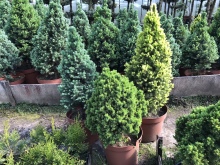
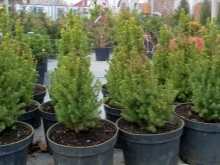
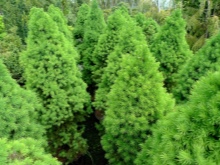
Plants with a closed root system and a voluminous earthen lump have a better chance of accepting than cuttings without soil, which must be planted immediately after acquisition. If there is a need for transportation, then the root system must be wrapped with a damp cloth, which not only does not allow it to dry out, but also protects the roots from damage. Experts recommend refusing to buy diseased, dry and damaged plants.
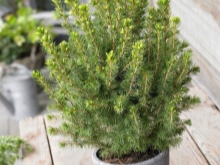
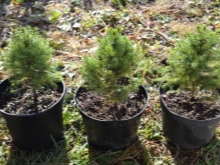

Experts recommend choosing well-lit areas with little shading for Konika. Light partial shade will protect the tree from the scorching sun rays and prevent burns.
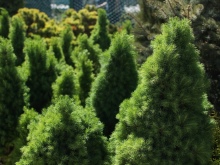
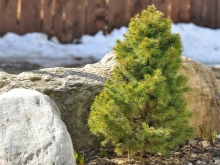
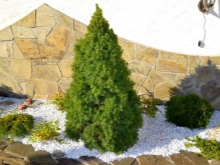
The selected area should be protected from strong currents of cold winds, and groundwater should not run in the surface layers.
Standing water and constant dampness can provoke root rot and subsequently the death of the plant.
The selected area should not be overwhelmed by a large number of other bushes and trees, which will significantly slow down the growth of the already slow-growing needles. The shade from large trees will lead to a change in the color of the needles, as well as to the appearance of fading, as a result, the plant will lose its decorative characteristics.
The selected site should have a fertile soil with a moderate acidity level. To increase the nutritional value of the soil, it is better to enrich it with organic and mineral fertilizers a year before planting.
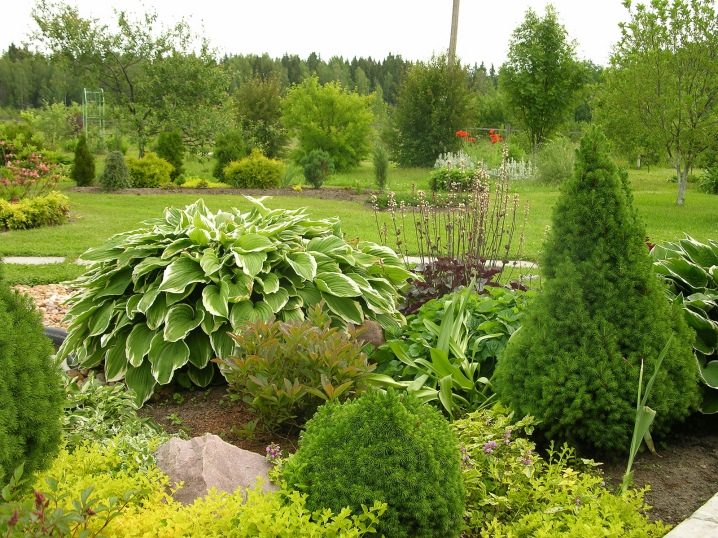
Before planting, the entire area must be dug up and leveled.
Planting stages:
- the formation of a landing pit of the required size;
- creating a drainage layer with a thickness of at least 5 cm;
- preparation of a nutrient mixture, which should consist of peat, deciduous soil, turf, sand and a small amount of organic fertilizers;
- placing a seedling in a pit while expanding the root system;
- filling all voids with nutrient soil;
- neat compaction of the earth;
- abundant watering, which provides for the introduction of about 12 liters of water into one hole;
- mulching the near-trunk area with peat, sawdust and crushed bark.
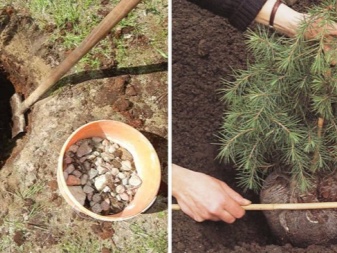

Exhaust gases and road dust will negatively affect the growth and appearance of the plant, therefore it is better not to use Konika for decorating areas near highways, but opt for other conifers.
If there is a desire to plant a spruce in a pot, then it should be placed only on the street. In an apartment, the plant feels bad and after a while begins to dry out. Some owners bring the green beauty into the house and dress it up for the New Year holidays. In this case, you need to choose the coldest room for it, far from the heating system.
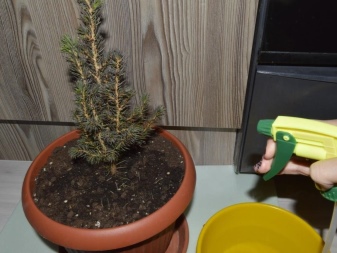
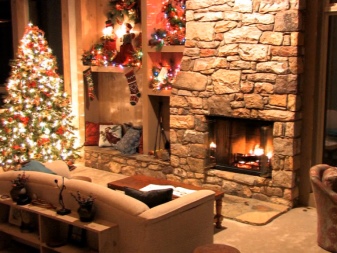
How to care?
Despite its unpretentiousness, "Konika" needs timely care and attention, which will allow the plant to maximize its decorative properties.
To prevent the soil from drying out, experts recommend watering it twice a week. At least 10 liters of clean and settled water must be poured into one planting pit. Daily spraying has a beneficial effect on it, especially during periods of high temperatures. But one should also not get carried away by excessive watering, which can provoke the development of putrefactive processes of the root system.
Regular loosening of the surface soil layer will help to enrich the root system with oxygen and prevent the appearance of weeds.

Novice gardeners try to weed the root zone as deeply as possible, which absolutely cannot be done due to the risk of damaging the root system, which is located close to the soil.
Timely mulching will help improve the condition of the soil and prevent it from drying out. Due to the course of natural decay processes, the mulch must be constantly refilled, and the difficult-to-decompose components must be replaced with new ones.
At the end of autumn, it is better to build a shelter around young spruce trees, which will protect the plant not only from severe frosts, but also from the scorching winter sun. During the summer sun, it is better to shade the plant with burlap or cardboard.
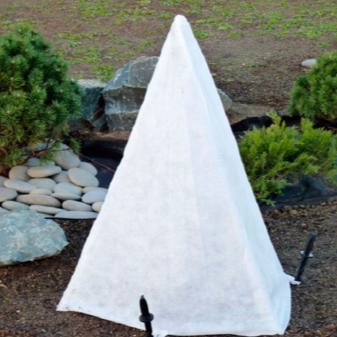

To obtain a beautiful and healthy plant, experts recommend regular feeding, which should consist of both organic and mineral fertilizers. If nutrients were used during planting, then their subsequent introduction is permissible only after 4 months.
Further feeding is carried out every 60 days in spring, summer and autumn.
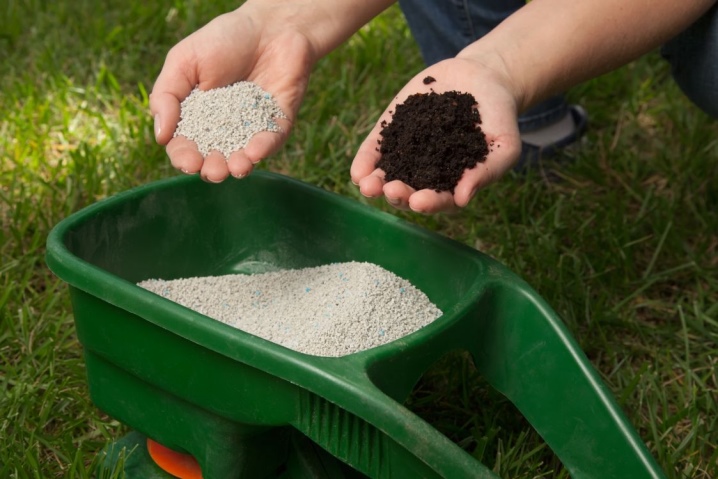
This type of spruce does not need a corrective haircut, but it acquires a conical shape on its own. But sanitary pruning of dry, diseased and deformed branches must be carried out regularly... To perform this type of work, professional gardeners recommend purchasing special tools.
It is very difficult to grow Konika at home, but if you follow all the necessary care requirements, cut it on time and feed it correctly, then in December the plant will become the main attribute of the New Year's celebrations.
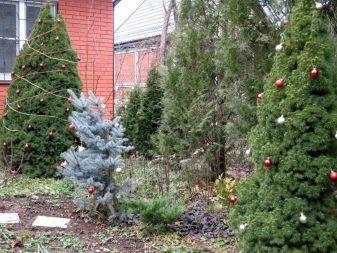
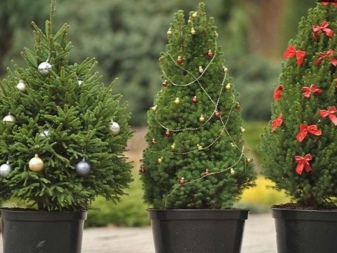
Reproduction
In order to get young plants, you can use the following methods:
- seminal;
- grafting.
The most popular among gardeners is the grafting method, but only the most experienced and patient summer residents grow young plants from seeds.
If there is a desire to propagate "Konika" by seed, then you need to know that only a few seeds from the cone have all the genetic characteristics of the mother bush, all the rest of the planting material may not give the desired result.

To plant the selected seeds, it is necessary to prepare the planting soil in advance, which should consist of peat, sod land, river sand and deciduous soil.All components must be mixed in equal proportions.
The planting depth should not exceed 10 mm. All work is best done in autumn or winter, and ready-made containers must be kept in a cool place until spring. If this technology is followed, already in the spring, the planted seed can please with healthy and strong shoots. This species has almost 100% germination result.
The annual growth of shoots can reach about 20 cm. Only after a few years, when the plant forms a strong root system, it can be transplanted into open ground or into a large flower pot.
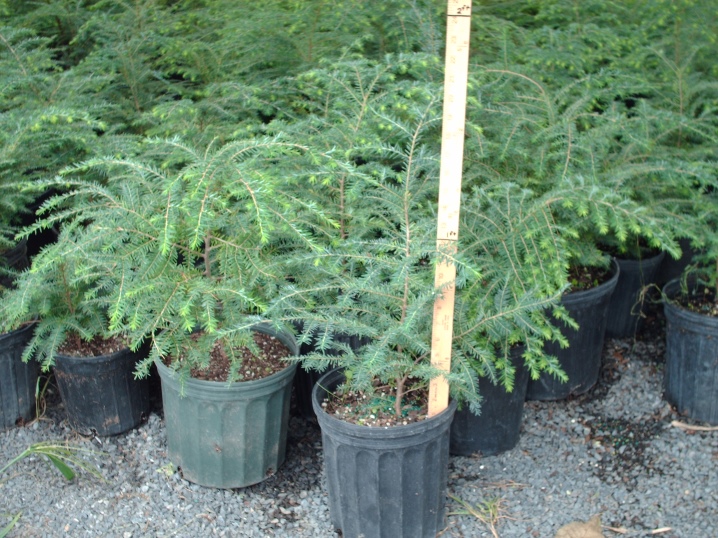
For to get a new plant with all the genetic characteristics of the mother bush, biologists recommend using the propagation method for propagation... This method is also slow, and young plants only after 4 years become suitable for transplanting to a permanent place of growth.

The most favorable time for this type of work is the middle of summer. The first two months after the cuttings are separated from the mother bush, the cut occurs overgrowing and only after that roots begin to form.
In comfortable conditions, the plant will be able to fully form the root system, which will help it easily overwinter.
To obtain a positive result, it is necessary to follow the stages of grafting:
- separation of cuttings from the mother bush along with a small part of the bark;
- placing the planting material in a special solution, which accelerates the formation of the root system;
- preparation of a nutrient substrate;
- deepening of cuttings followed by watering with an accelerator of the growth of the root system;
- creation of a greenhouse shelter with a high level of humidity and temperature conditions.

Diseases and pests
Due to its genetic resistance to various types of diseases, "Konika" is very rarely exposed to diseases. But despite the high level of immunity, she may have the following diseases.
- Tracheomycosis - a dangerous disease that does not respond to treatment. At the first signs of this disease, the spruce must be dug, removing all roots from the ground, and burned away from the personal plot. Signs - the appearance of red spots on the crown and massive shedding of needles.
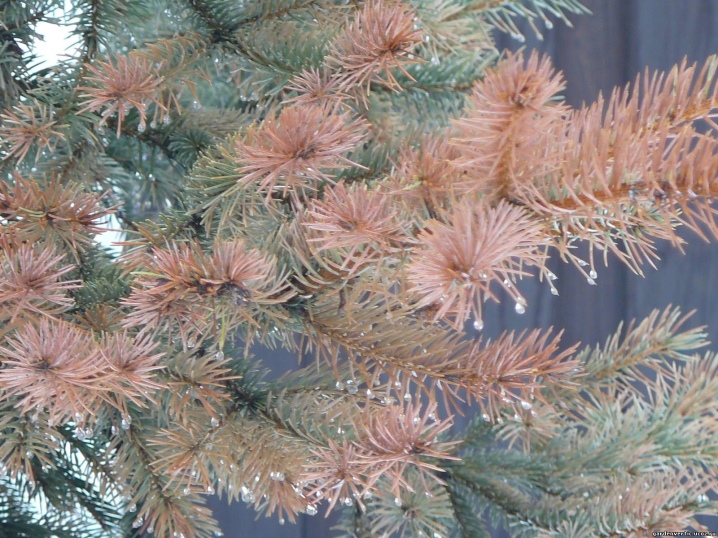
- Rust - a common disease, the first signs of which are the appearance of orange growths on the crown. After a short period of time, the needles begin to dry, turn yellow and fall off the needles on the spruce. To prevent the death of a plant when the first signs of a disease appear, it is necessary to sprinkle it with special chemicals.
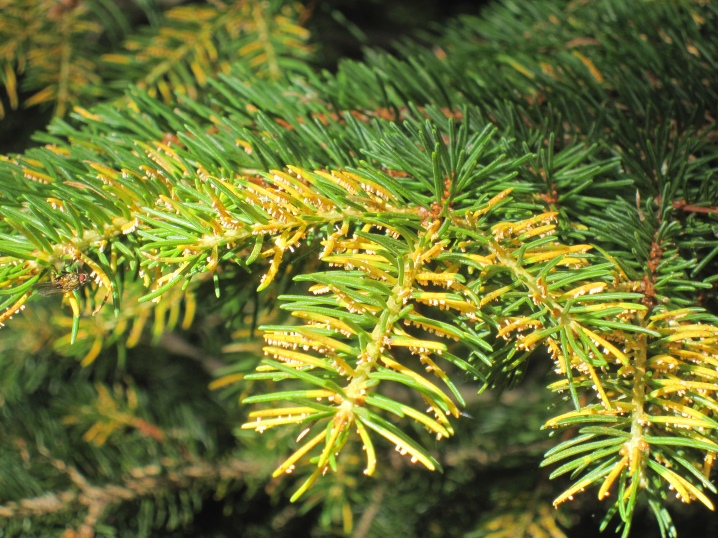
- Schütte's disease - an infectious disease that is treated with copper sulfate.
The first signs are white bloom on the needles.
If you do not start treating the disease in time, after a while all the spruce needles will turn black and crumble, and the plant will die.

Not only infectious and fungal diseases, but also dangerous pests can lead to the death of "Konica". Biologists recommend paying attention to the following insects.
- Bark beetle - a dangerous pest that affects weakened spruce. To prevent it from getting on the tree, it is necessary to carry out regular treatments of the trunk with insecticides, since it is almost impossible to destroy it. If the insect begins to destroy the wood, then in order to prevent infection of other plantations, it is better to dig up the spruce and burn it.
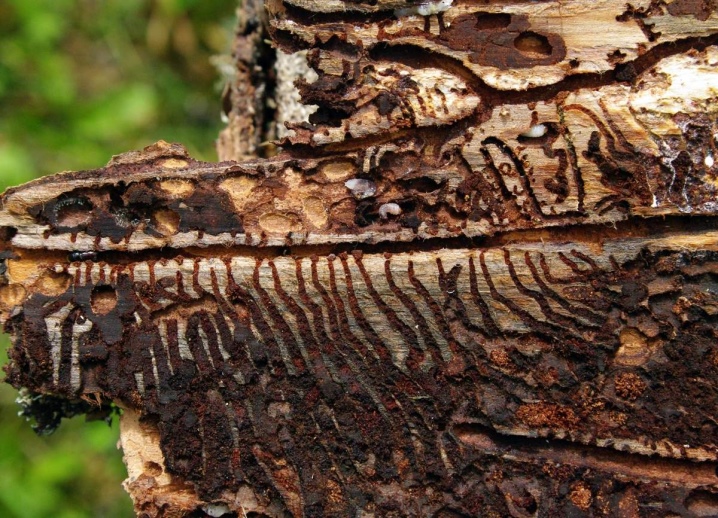
- Spruce false shield - a dangerous pest that settles under the bark and sucks out all the juice from the spruce. Signs - rapid and massive falling of needles. You can get rid of the parasite only with special chemicals.

Use in landscape design
Canadian spruce of the Konica variety is an irreplaceable plant for landscape design, which can be found not only in the garden, but also in city parks, alleys and near administrative offices. Due to their beautiful shape and small size, spruce trees can be planted either one at a time or several at once.
Most often, "Konika" is planted near the entrance to the house, near summer pavilions and near playgrounds.
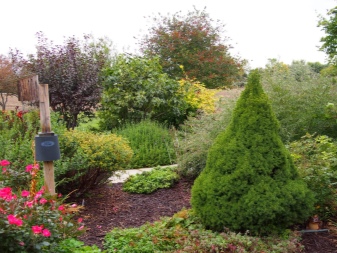
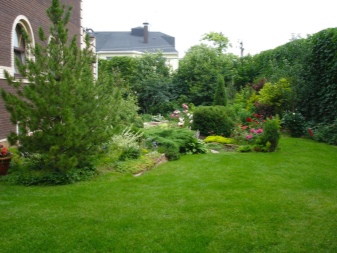
With the help of group plantings, you can create hedges and unusual green compositions.
Designers identify several of the most spectacular group plantings of fir trees.
- Solitary - single plantings that can be carried out both in the open field and in pots. If the plant is planted in a special flower container, then its location can be changed depending on the mood of the owner and in accordance with new design trends.
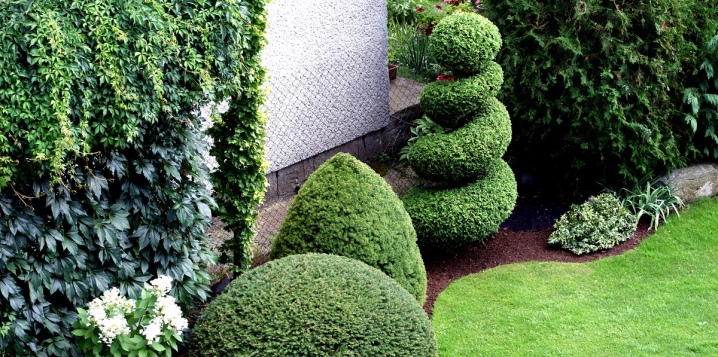
- Hedge - long stands that can be formed near the fence or instead of it. When planting spruce strictly along one line, it is necessary to take into account the fact that the diameter of the crown of an adult tree can reach 2 meters. Names, this value should be the base when calculating the distance between trees. The indisputable advantage is the absence of the need to trim the hedge and give it the necessary shape.
No less impressive "Konika" looks in rock gardens and rockeries. A coniferous plant can be a wonderful backdrop for flowers, especially during their flowering period.
Owners of private houses often use Konika as a Christmas tree that can be brought into the house or decorated directly on the street.
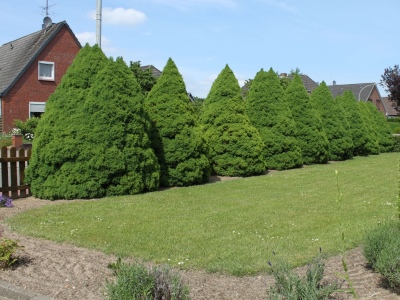
How to care for Canadian Konica spruce, see below.



































































The comment was sent successfully.